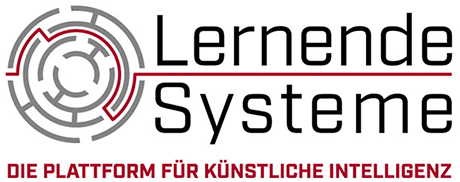Factory of the future: How to succeed in collaboration with intelligent robots
Robots have long been a reality in large factories today. In a few years, supported by Artificial Intelligence (AI), they will also be able to assist employees in assembly in small companies. The prerequisite is that collaboration with the learning machines is safe and that people retain motivating, self-determined activities. In a fictitious application scenario, Plattform Lernende Systeme takes a look at the future of industrial work. The interactive graphic illustrates how collaboration with AI-based robot systems will change and what needs to be done to ensure that employees benefit from the self-learning tools.

Robots that automate processes in factories today only perform specific, recurring tasks for which they have been programmed. They are therefore profitable primarily for mass production. In the future, assembly workers will be able to instruct learning machines themselves, for those tasks in which they currently need support. Medium-sized companies in particular will benefit from the versatile robotic tools, which are based on Artificial Intelligence and are also suitable for small-batch production.
The application scenario "Learning robot tool in assembly" (in German) accompanies the fictitious skilled worker Paula Nowak. In a factory that produces cable harnesses for the automotive industry, she is assisted in strenuous, monotonous or dangerous tasks by a gripper arm that independently takes on changing tasks during operation. They hold heavy components or thread cables through sharp-edged constrictions. The skilled worker teaches her self-learning robotic tool new sequences by demonstrating the varying tasks to it.
With a click of the mouse, the interactive graphic shows the prerequisites for successful collaboration with the robotic tool. For example, Paula Nowak's concerns about whether the tool could injure or monitor her or endanger her job are addressed - and what her employer and the robotic tool must do to allay these concerns. Experts from science, industry and trade unions have their say in videos and audio statements.
Enable instead of replace
Another topic: How do we maintain room for maneuver and rich work? AI-based industrial robots do not replace people, but support and empower them, is the central message of the application scenario. The learning tools in Paula Nowak's team adapt to the individual needs and routines of their operators and support them according to their skills and work pace. Paula Nowak herself determines when and how she uses her tool. She experiences her work as more varied because monotonous activities are eliminated and she can perform more planning tasks.
"Intelligent robotic tools complement the skills of people. They need neither replace nor compete with employees. This means combining the strengths of human thought and action with the capabilities of technology so that employees can benefit from AI and companies can exploit the economic potential of the systems," says Norbert Huchler, board member at the Institut für Sozialwissenschaftliche Forschung ISF and member of Plattform Lernende Systeme.
Employees retain control
With the help of Artificial Intelligence, the robotic tools continuously improve acquired skills on their own. Once they have learned something, they can apply it to other cases. The important thing here is that their actions must be transparent. Paula Nowak can see in her tool's learning history which parameters it uses to make decisions. She can intervene in the tool's activities at any time. This not only creates trust, but also contributes to a clear attribution of responsibility and liability if errors occur during assembly.
In order for the robotic tool to provide individual support to employees, it must process personal data. With the help of cameras, software in the learning tool analyzes what Paula Nowak is doing. It must be impossible for the employer to misuse this information to monitor performance. For this reason, the data is not stored centrally in the application scenario, but recorded directly on the robotic tool and then deleted.
Before the application scenario of Plattform Lernende Systeme can become reality, a number of prerequisites still need to be met. For example, employees must understand how learning robot tools work in order to benefit from them. Training and continuing education are necessary for this. Further research and development work is also needed in the fields of robotics, programming and machine learning.
About the application scenario
The application scenario Learning Robotic Tool in Assembly was designed by experts from the Future of Work and Human-Machine Interaction working group of Plattform Lernende Systeme. The scenario is based on the white paper Criteria for Human-Machine Interaction in AI (in German).
Further information:
Linda Treugut / Birgit Obermeier
Press and Public Relations
Lernende Systeme – Germany's Platform for Artificial Intelligence
Managing Office | c/o acatech
Karolinenplatz 4 | 80333 Munich
T.: +49 89/52 03 09-54 /-51
M.: +49 172/144 58-47 /-39
presse@plattform-lernende-systeme.de
